| |
From Jenny Lind to Jane Eyre
|
|
The Swedish opera singer Jenny Lind (1820-87) was already well-known in Europe but became
famous in Britain after her performances in London in May 1847, about six
months before the Bronte sisters' first novels were published.
In August 1847 the singer began a tour of the United Kingdom
using our early railways; this page lists some of the places visited in Lancashire and Yorkshire in
1847 and 1848, along with some notes on the Bronte sisters.
About a year after Jane Eyre was published the 'Swedish
Nightingale' actually passed through 'Bronte Country', before it was so-named and before the Bronte
sisters' identity was known to the public. Although the two never met, Charlotte
Bronte was one of Jenny Lind's many admirers.
i) Lindmania
ii) 1847 Tour of Britain
iii) 1848 Tour of Britain
iv) "I do like and esteem Jenny’s character"
|
|
i)
Lindmania
|
|
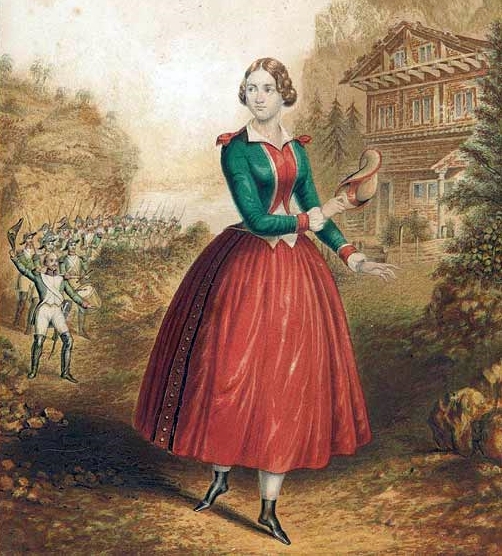
Jenny Lind as Maria in La figlia di Reggimento c1847.
Source: Wikimedia Commons 'Jenny Lind Fille du
Regiment'.
For those who lived through the late 1840s they
were peculiar times indeed. The arrival on these shores of Jenny Lind In
April 1847 was met with great excitement and a wave of 'Lindmania'
spread throughout the country. It has been compared with the Beatlemania of the 1960s and
a large portion of the population became caught up in it. Even Victoria, Queen of
England, was a fan of Jenny Lind, who was often referred to as 'The
Queen of Song'.
In 1847-9, Jenny Lind's name was given to a greyhound, a racehorse, a
yacht, a schooner, railway engines, hospital wards and many commercial products. In
Scotland a 'Jenny Lind' was still a hat, but at the same time it was the name of a flat,
round, loaf of bread (possibly resembling a squashed hat) and in Aberdeen it
was the name of a granite polishing machine.
|
"The Jenny Lind mania
has not yet subsided: rows for places at the Italian opera are of frequent
occurrence. On Saturday last, the Hon. [George] De Grey, brother of Lord
Walsingham, complained at Marlborough street against a gentleman named Frith, who
had violently assaulted him on the previous evening.
Each had paid £2.12s. 6d. for a stall in
the pit, and each claimed the particular seat: the result was that Mr. Frith
ejected Mr. De Grey, and the police-magistrate sentenced him to pay a fine of
£5 for what he had done." (Stamford Mercury - Friday 02 July 1847).
"A furore for Jenny Lind pervades all London; her name is
beginning to be appropriated to various articles of dress, and her portrait is
sold on pocket-handkerchiefs." (Norfolk Chronicle - Saturday 29 May
1847 p.2)
|
Even though the
singer had no connection with them, Jenny Lind's name was used by British manufacturers to
sell their products, and they went into overdrive: In fashions alone, apart from 'Jenny Lind' hats, there were
'Jenny Lind' patelots, 'Jenny Lind' cloaks, 'Jenny
Lind' riding boas, 'Jenny Lind' dresses', Jenny
Lind' mantles, 'Jenny Lind' capes, 'Jenny Lind'
fans, 'Jenny Lind' caps & 'Jenny Lind' combs.
|
"I was a few years ago
[1847] at a
[tortoiseshell] comb manufactory in Sheffield, where I was informed
that an unusual amount of activity was going on after years of depression. On
inquiring the cause, I learned that her Majesty [Queen
Victoria] had visited the opera with a
Jenny Lind comb in her hair, and this had made all the difference between
almost starvation and a state of great prosperity to the poor combmakers of
Sheffield." (Lankester Edwin, The Uses Of Animals In Relation To
Industry Of Man (1876) p.312.)
|
|
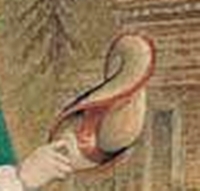
In 1847 the wide-awake hat used by Jenny Lind in
Donizetti's opera 'La figlia di Reggimento' was reproduced and sold as a
'Jenny Lind' hat, available in either
felt or straw.

The wide-awake straw hat worn by 'Emily' in the
photo.
|
|
|
ii) 1847 Tour of Britain
|
|
"The Queen has not failed to
witness every performance of Jenny Lind, when her Majesty has been in
London." Brighton
Gazette, Thursday 5 August 1847
|
After her
first season at Her Majesty's Theatre, London, Jenny Lind toured Britain, performing in operas and
concerts. Construction of railways during the Railway Mania of the 1840s meant that she could travel around most of
the country with comparative ease. Shopkeepers in towns anticipating a visit by
the singer bought in stocks of various 'Jenny Lind' fashions and 'Jenny
Lind' souvenirs. It was a little like a Royal Visit. One of her first concerts was in
Birmingham and the newspaper article below is a reflection of scenes witnessed in many towns and
cities in the United Kingdom.
|

"THE JENNY LIND MANIA IN AND
ABOUT BIRMINGHAM - During the afternoon she walked through the principal streets of
the town, and was much amused by seeing "Jenny Lind" handkerchiefs and shirts,
"Jenny Lind" snuff boxes and cigar cases, "Jenny Lind" busts, and "Jenny Lind"
portraits, in numerous shop-windows in New street, High street,
&c.
The crowd in the streets near
the Town-hall during the performances gave to the town the appearance it wears
during a music festival. As various trains leave Birmingham for the north, south,
east and west about midnight, the scene on the railway station was a singular one -
ladies walking or running about the platforms in full dress.
Indeed, at all the stations
north of Birmingham, as far as Stafford, the train at every stopping "set down" one
or more parties, having all the appearance of just leaving the ballroom: and it was
a novel sight at the Stafford station to see ladies elegantly but lightly attired
standing on the railway platform without bonnets, and dressed for the dance, at a
quarter to three o'clock in the morning. Such are some of the extensions to our
modern amusements which railways afford. Ladies in full dress going thirty miles to
a concert, and returning home thus attired that distance at three in the morning!"
1.
|
Lancashire 1847
|
Sat 28 August - Manchester - La Sonnambula.
Mon 30 August - Manchester - La Sonnambula.
Thu 2 September - Manchester - La Figlia del
Reggimento.
Mon 6 September - Liverpool - La Figlia del
Reggimento.
Wed 8 September - Liverpool - La Sonnambula.
|
Manchester
Jenny Lind
arrived in Lancashire at the end of August 1847 for operatic performances in Manchester and
Liverpool. Because of the crowds she attracted she preferred to stay at private residences, and her
hosts in Manchester were Silas Schwabe & family at Rusholme. During her stay Jenny visited
several factories including one of the largest locomotive works in the world, and even a
phrenological gallery. She also attended a private exhibition of hypnotism given by James Braid, which was probably considered appropriate as she had recently
performed in La sonnambula.
|
JENNY LIND - MAKING THE MOST OF HER.- The
following rich bit appeared as an advertisement in the Manchester Guardian of
Wednesday last:-"Jenny Lind. Immense Attraction.- The bed on
which Jenny Lind slept in La sonnambula, is now on view and on sale, at No.12,
Peter-street.-Apply at No.12, Lloyd-street, Cooper-street. T. Pesch."
2.
|
The Schwabe's were friends of Elizabeth Gaskell but
this was before she had met Charlotte Bronte. At this point in time (August 1847) the novels
written by Emily and Anne had been accepted by their publisher, Thomas Newby, and they were awaiting publication. Charlotte's novel The
Professor was rejected, but she had then submitted Jane Eyre to
Smith, Elder. On 8 September she travelled to Birstall to stay with her
friend Ellen Nussey and on 12 September she wrote to Smith, Elder accepting their terms for
publication. Jane Eyre was published October 1847; Wuthering Heights and Agnes
Grey, were published in December 1847.
Yorkshire 1847
|
Fri 10 September - Hull (Concert)
Sat 11 September - York (Concert) CANCELLED
ON DAY
Sat 18 September - Sheffield (Concert)
CANCELLED IN ADVANCE
|
Hull
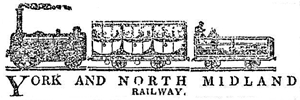
Jenny
travelled by special train to Hull, Yorkshire on Friday 10 September 1847, staying at the Royal
Hotel, and gave a concert at the Royal Amphitheatre that evening.
|
JENNY LIND'S
CONCERT HULL. Mademoiselle Jenny Lind made her debut on the evening of Friday last, in the spacious
building recently occupied as an amphitheatre, but now under the management of Mr
Egerton. The box office at the theatre was opened for the of those desirous
securing places, and on the first day upwards of £800 were taken. Similar
arrangements were also made in other places, including York, Leeds, &c., and
altogether the amount realised reached pretty near £1,600.
Friday evening was very
unfavourable for the occasion, there being an incessant fall of rain for several
hours, but notwithstanding this, the number of persons assembled in Paragon-street
was unprecedentedly large. The hour appointed for the commencement of the concert
was eight o'clock and for some time previously the entrances to the amphitheatre
were besieged by persons anxious to hear the Swedish Nightingale. The line of
carriages, occupied principally by parties of distinction, extended from the
Amphitheatre to Whitefriargate, and also to the end of Bond street. Indeed, the
setting down of the company occupied a great length of time after the concert
commenced.
The attendance was not equal to
expectation, particularly the high-priced parts of the house - the sum charged
being more than the people of Hull were either able or disposed to pay. The fair
cantatrice was accompanied Madame Solari, Signors Gardoni and F. Lablache as
vocalists, and the instrumentalists were Messrs. Royal and Seymour. Mr. Balfe was
the conductor. Jenny Lind's voice
and beauty of execution repeatedly drew forth immense applause, and at the close of
the performance, she was bouquetted by parties occupying box-seats. The concert
concluded about half-past ten o'clock, and a rumour soon prevailed the effect that
Jenny Lind was about to take her departure for York, the same evening, by special
train. She, however, did not leave Hull until the following afternoon,
....
Hull Advertiser and Exchange Gazette - Friday 17 September 1847,
p.5
|
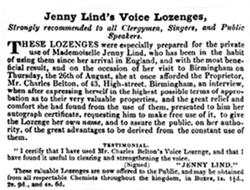
She may have needed them in September - advert for Jenny
Lind Voice Lozenges, 1847.
"Strongly recommended to all Clergymen, Singers and Public
Speakers."
York & Sheffield
Jenny
Lind was due to leave Hull that evening on a special train laid on by the 'Railway King'
George Hudson (the Lord Mayor of York), and stay as the guest of the
elderly but energetic Archbishop of York. Privileges such as this were normally only extended
to the highest ranks of society and royalty. A concert had been scheduled for the following
day at the Festival Concert Room but unfortunately she was ill (probably
a cold) and it was cancelled. There was not enough time to notify people and one report
included Lord Morpeth and the Duke of Devonshire as being amongst the disappointed
ticket-holders.
|
JENNY LIND AND HER YORK ENGAGEMENT "Saturday
morning came ... strangers entered the city at every avenue - and the carriages of
the nobility and gentry of the county crowded the streets, and rendered the scene
all animation and gaiety. Thus the affair proceeded til about ten o'clock, when the
Hull telegraph announced that Jenny Lind had been unwell on Friday night, and could
not then proceed to York; but that she would leave Hull at one o'clock that day,
and arrive in York about three, where she would take refreshment, and then proceed
to Edinburgh." 3.
|
The crowds
did catch a glimpse of Jenny at York Railway Station, which was then inside the city walls, but she only
rested a short time before taking the train to Edinburgh. Another concert at Sheffield, planned for 18 September, was also cancelled. In York and
Sheffield, shopkeepers were probably left with many unsold 'Jenny Lind'
souvenirs.
Critics
|
Jenny Lind did have
her critics:
LINDOMANIA
EPIDEMICA
Oh, strange effect of fashion and
pretence!
Thousands, whose ears inherit not the sense
Of music,— who could ne'er be taught to
sing
Our good "Old Hundredth," or "God save the
King"
Must pay their humble crown, or haughty
guinea,
To hear this paragon of song,-this JENNY
To hear, but most, to say he heard, her
strain,
The tradesman quits his counter, flies by
train,
And, wondering why he went, flies home
again!
Gold-spinning Jenny! hie thee home, and
laugh,
To think how well JOHN BULL has proved thy GOLDEN
CALF.
Oct. 4th, 1847. GELASMA.
Hampshire Advertiser, Saturday 09 October
1847
|
October
1847
From "Jenny Lind Fever" to "Jane Eyre
Fever"
After concerts in Edinburgh,
Glasgow, Perth, Norwich, Bristol, Bath & Exeter, Jenny Lind left England on
Tuesday 12 October 1847. Charlotte Bronte's novel Jane Eyre was
published the following week so adverts for the new Jenny Lind
sheet music 'England, Home of Friend's, Farewell' coincided with
adverts for the forthcoming publication of Charlotte's first
novel.
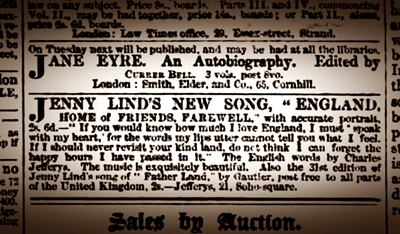
"The “Jenny Lind
fever" raged during that year [1847] and the following season with unabated violence, taking
the form of portraits printed on handkerchiefs, fans, and similar
objects. One chronicler even mentions "Jenny Lind potatoes,” called so
from the blue speck on their skins because the prima donna had blue
eyes." Kentish Independent
- Saturday 04 January 1890
"Those who remember that
winter of nine and twenty years ago [1847-1848] know how something like a"Jane Eyre” fever raged among us. "Northern Whig - Saturday 09 September 1876
|
|
November 1847
ENTIRE NEW GOODS IN LADIES' AND CHILDREN'S HATS AND
BONNETS
R. Bissington
respectfully invites the Attention of Ladies to these Goods in all the
Newest Designs of the Season, embracing the PALAIS ROYAL,
JENNY LIND, CLARENCE, PRINCE EDWARD,
&c.
Richard
Bissington, 34, Briggate, Leeds & 16, Market Place, Hull.
(Leeds Mercury, Yorkshire, Saturday 6
November 1847)
|
|
December 1847
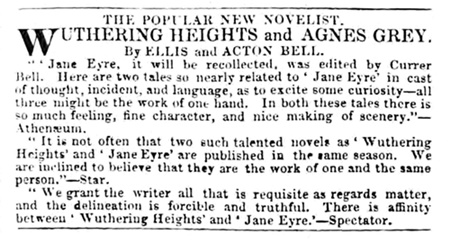
Advert for Emily Bronte's Wuthering Heights
& Anne Bronte's Agnes Grey, December 1847
|
|
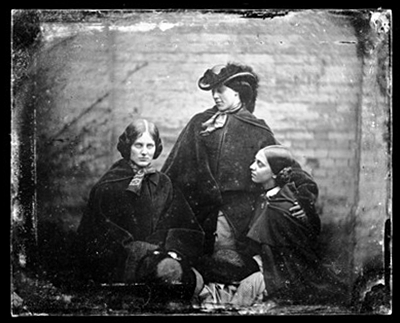
If the photo is of the Bronte sisters then it
was probably taken between December 1847, after all three had become
published authors, and January 1848, when Charlotte first used the word daguerreotype.
|
|
|
iii) 1848 Tour of Britain
|
|
Leeds, Yorkshire, June 1848.
JENNY LIND!! - JUST ADDED to the Splendid
Collection of WAX WORK FIGURES, COSMORAMIC VIEWS, ROCK HARMONICON, &c., &c., now Exhibiting to Crowded
Houses at the SALOON OF ARTS, Briggate [Leeds]. J. SPRINGTHORPE, Artist, feels
grateful for the distinguished support his Exhibition continues to meet with,
(being now firmly established in the Public estimation) respectfully announces
that he has added to his Collection A CORRECT LIKENESS of JENNY LIND,
the Swedish Nightingale. Also a Fine Figure of the KING OF PRUSSIA,
habited in the Prussian uniform. 4.
|
Charlotte and Anne travelled by railway, via Leeds, to
London in July 1848. They were to meet with their respective publishers and reveal their true
gender and identities. Some books state that the sisters attended an opera by Jenny Lind at the
Italian Opera on the evening of 8 July 1848, but she was performing that season at
Her Majesties Theatre, and not on that night. The Italian Opera
Company had moved from Her Majesties Theatre to Covent Garden in 1847.
As far as we know, George Smith (Charlotte's publisher) took the two sisters to see The
Barber of Seville at the Italian Opera, Covent Garden.
Lancashire, Summer 1848
|
1848 Thu 7 September - Liverpool (Concert)
1848 Sat 9 September - Manchester (Lucia)
1848 Mon 11 September - Manchester (La Sonnambula)
|
Manchester
Whilst in Manchester on her second tour of
Britain in 1848 Jenny Lind again stayed with her German friends, Mr & Mrs Silas Schwabe, who were now living at Crumpsall
House, Middleton. On Tuesday 12 September she left Manchester for Yorkshire
as she was due to give a performance of La Sonnambula in Hull on Thursday
14th.
Yorkshire Summer 1848
|
1848 Thu 14 September - Hull (La Sonnambula)
1848 Mon 18 September - York (Concert)
|
A Small World?
She left Manchester (12 September
1848) by train, along with another lady and four men (probably Madame Solari and Signors
Gardoni, Lablache, Seymour & Royal). Instead of travelling in the direction
of Hull they alighted at Halifax, walked to the nearby White Lion Inn and drove off
in a horse-drawn carriage, northwards.5. This was unusual because she travelled almost
everywhere in Britain by train. The destination was Bolton Abbey & Woods near Skipton, an estate belonging to the Duke of Devonshire which, over the past 30
years, had been laid out as pleasure grounds. We can be fairly certain of the route
taken because the best road and by far the most direct route was via Keighley, using
the Halifax & Keighley Turnpike (the present A629).6.
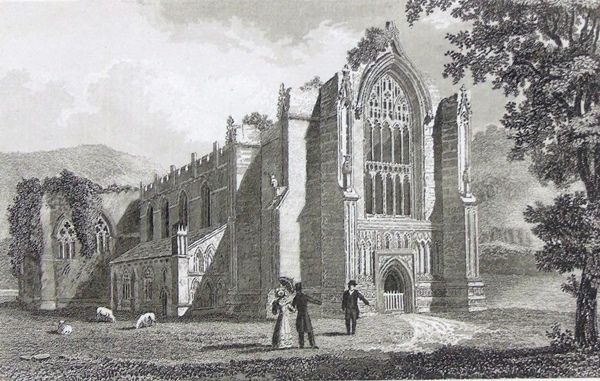
Bolton Abbey, on the Duke of Devonshire's estate
near Skipton, Yorkshire c1840.
Assuming
that this was the route taken, then at the point where they passed the
Cross Roads Inn they would have been just over a mile away from
Haworth. It does seem remarkable that Jenny Lind, who in 1847-8 was perhaps the
most famous and talked about woman after Queen Victoria, passed so close to
three relatively isolated, anonymous women who were in fact three of
the most talked about novelists of the period. At this date though (12 September 1848), it is
thought that only a handful of people in Yorkshire and London knew that the Bell
brothers' three novels were actually published by the three Bronte sisters living in
Haworth.7.
Leeds
Jenny Lind and her entourage probably stayed
overnight in the Bolton Bridge area because the following day (Wednesday 13
September) they headed towards Leeds where she made an unannounced visit to Marshall's Flax
Mill.
|
"...she called at the mill
of Messrs.
Marshall, the well-known flax spinners,
at Holbeck or Hunslet, near Leeds, and was conducted over it by one of the
managers. The visit was paid without any notice being given, and hence none of
the heads of the firm were present. A more extensive or extraordinary
specimen of a manufacturing establishment could scarcely have been
chosen." 8.
|
The reason the report describes this as
an "extraordinary specimen" is because the gigantic
single-storey Temple Works was one of the largest rooms and one of the most
ingenious industrial buildings in 1840s Britain. It had one foot in the past and the other in the future. Built with
a facade in the Egyptian style of architecture, it was also practical, with
cone shaped lanterns allowing daylight for workers in the room below, on a
roof with an enormous span which was turfed to keep it cool. The
grass on the roof needed to be trimmed and it could sometimes be seen with a
flock of sheep grazing on it; a lift,
possibly using very early hydraulics, had to be used to raise the sheep
up to the 'field'.
Hull
Jenny Lind reached Hull on Wednesday night, staying at the Victoria Hotel and
appeared at the Theatre Royal in La Sonnambula on Thursday night, "before a
crowded house and most enthusiastic audience."
Filey
When she left Hull on the morning of Friday 15th it was thought that she would
stay at Scarborough but she "proceeded to the romantic watering place of Filey Bay". According to the York Herald she took up "residence at
Foords Hotel [a
coaching inn] and .... she expressed herself much delighted with the scenery of the coast
and neighbourhood, and enjoyed some quiet rambles on the sands." 8.,9.
York
She left Filey on Sunday afternoon, and reached Etridge's Hotel, her lodgings at
York, on Sunday night for a concert the following day, Monday 17th September:
|
"On Monday
morning she went through the magnificent cathedral, and the beautiful gardens
of the Yorkshire Philosophical Society, inspecting the fine
collection of antiquities contained in the society's
museum.
Owing to the smallness of the Theatre Royal, the concert was
given in the Festival Concert Room, and was attended by not fewer than 1,200
individuals, comprising members of all the noble and ancient families whose halls
are scattered about the three ridings within a few miles of the city.
Their enthusiasm was unbounded, and in the last part every
one of Jenny Lind's songs was encored, and met with an immediate response. When she
appeared for the last time, splendid bouquets were thrown upon the orchestra from
100 fair hands. Mr. Edward, florist and an extensive dahlia grower, was engaged all
the day culling and arranging bouquets of his most excellent flowers, which he
disposed of at large prices." 10.
|
Yorkshire & Lancashire, Winter 1848
|
1848 Mon 4 December - Leeds (Concert for the
Orchestra)
1848 Tue 19 December - Manchester (Charity concert for the Manchester Royal
Infirmary)
1848 Thu 21 December - Manchester (Charity concert for the Manchester Royal
Infirmary)
|
Towards the end of 1848 Jenny Lind appeared in concerts in various towns,
raising money for good causes, and this was repeated throughout 1849 and part of 1850, the year
that she left Europe for her tour of the United States with P T Barnum.
For the Bronte family, the triumphs of 1847-8 turned to tragedy as tuberculosis
carried off Charlotte's brother and two sisters. Branwell Bronte became ill and died on 24
September 1848. Emily Bronte was in perfectly good health but became ill with a cough a week after
Branwell's funeral, she went into decline and died on 19 December 1848.
Then Anne Bronte became seriously ill and, as with Branwell and Emily,
became "emaciated". On 24 May 1849 she travelled with her sister Charlotte and their friend,
Ellen Nussey, to York. Whilst in the city they purchased bonnets and neck
ribbons and they visited York Minster.11. The following day the three travelled to
Scarborough where Anne died on 28 May 1849 and the funeral was held two days later in
Scarborough.
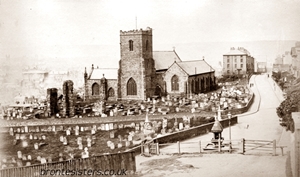
St Mary's Church, Scarborough in the
1880s.
On 7 June Charlotte travelled with Ellen Nussey to Filey, staying at
Cliff House, and after a spell in Bridlington they returned
to Haworth. Charlotte returned to Filey in 1852 and although
understandably feeling "utterly alone" she did enjoy her stay there.
|
|
iv) "I do like and esteem Jenny’s character"
|
|
"If I could not be a Lind, I would not be a singer": Charlotte Bronte
12.
The fame, fandom and commercialisation of Jenny Lind was a world apart
from the pseudonyms and secrecy of the Bronte sisters, but they all achieved success
in Britain in the same year, 1847. Charlotte admired Jenny Lind as a
person. What Anne and Emily thought we may never know but they shared a
greater interest in music, playing the piano together and their annotated sheet
music survives to this day. Emily had the advantage of piano lessons from the best
tutor in Brussels and for a few months she taught music to young pupils at the Pensionnat
Heger. Her love for music and the musicality of Emily's Wuthering
Heights is well documented. 13.
"I do like and esteem Jenny’s character": Charlotte
Bronte 14.
|

In 1847 the wide-awake hat used
by Jenny Lind in Donizetti's opera 'La figlia di Reggimento' was reproduced and
sold in Britain as a 'Jenny Lind' hat,
available in either felt or straw. For more information see Straw Hats and Cloaks.
|
|
|
2020
|
|
2020 - Bicentenary of the birth of Jenny
Lind
Bicentenary of the birth of Anne
Bronte - 2020
|
|
Footnotes
|
|
1. Hull Advertiser and Exchange Gazette - Friday 03 September
1847
2. Leeds Times, Saturday 18 September 1847
3. Newcastle Guardian and Tyne Mercury - Saturday 18 September
1847.
4. Leeds Times - Saturday 17 June 1848
5. Leeds Times - Saturday 16 September 1848
6. The southern section of the turnpike can be seen
on this map heading north from Halifax and the northern section on this
map near Keighley; Bolton Bridge & Abbey is directly north of Addingham,
at the top edge of the map. The Home Page for the website is here.
7. It is not known why Jenny Lind visited Bolton
Abbey. It was a beauty spot so it may have been at the suggestion of the Schwabe's, the York-born
artist, William Etty, or perhaps they were there at the invitation of the Duke of
Devonshire.
8. York Herald - Saturday 23 September
1848.
9. History and Topography of Yorkshire, Volume II,
1867 By Mike Thornton p.317: Whilst there she visited a farm in Hunmanby called Graffitoe House
which was afterwards renamed Lind House.
10. Manchester Courier and Lancashire General
Advertiser - Saturday 23 September 1848
11. They stayed overnight at
the George Hotel in Coney
Street. They were probably
unaware that this was a stone’s throw away from the new home of William Etty, the York-born artist whose name appears in the
Bronte juvenilia. He had spent most of his career in London, but returned to York in 1848 and
was then living in a house in Coney Street. Jenny
Lind sat for a portrait by him, presumably whilst in London in
1847-8.
12. Letter Charlotte Bronte to W S Williams (reader
at her publishers, Smith, Elder), 19 December 1849:
"I was told you had once some thoughts of
bringing out Fanny [his daughter] as a professional singer...if I could not be a Lind I would
not be a singer."
13. Links for Emily Bronte & Music:
Book: Emily Jane Bronte and Her
Music, John Hennessy
(2018)
Book: The Brontës in
Context, Marianne
Thormählen (2014)
Book: The Brontës in the World of
the Arts
Book: Emily Bronte and Beethoven:
Romantic Equilibrium in Fiction and Music, Robert K. Wallace (2009)
PDF: [PDF] Emily Brontë's Musical
Appropriations: From
Literary Inspiration to Performative Adaption, Paula Guimarães, Universidade do Minho
Website: The Brontës and the Haworth
Music Scene, Nick
Holland
Website: Music and the
Brontes, Philip Scowcroft,
2001
Video: Jamie Cullum's Piano
Pilgrimage: The Brontë
Piano
Video: Piano (Bronte
200) , John
Thirwell
Download: Bronte Society
Transactions £££ $$$: Emily Brontë and Music:
Haworth, Brussels, and Beethoven, Robert K. Wallace
14. Letter Charlotte Bronte to W S Williams (reader at her publishers,
Smith, Elder), 9 November 1850.
"I received from Cornhill the other day a
periodical containing a portrait of Jenny Lind—a sweet, natural, innocent peasant-girl face,
curiously contrasted with an artificial fine-lady dress. I do like and esteem Jenny’s
character. Yet not long since I heard her torn to pieces by the tongue of detraction—scarcely a
virtue left—twenty odious defects imputed."
Charlotte's novel
was commenced nine months before the
Swedish Nightingale's arrival in England but
the similarities in character between Jane Eyre and Jenny Lind have been
noted in the past.
|
|
A daguerreotype photo was taken of Jenny Lind
whilst in London, about August 1847, at Barratt's Coloured Photographic Portrait
Institution, 222, Regent Street. The following year William Edward Kilburn took at least two
photographs of Jenny Lind and at least one of Jenny Lind with Marietta Alboni. Queen Victoria
purchased two of Kilburn's photos of Jenny Lind in 1848.
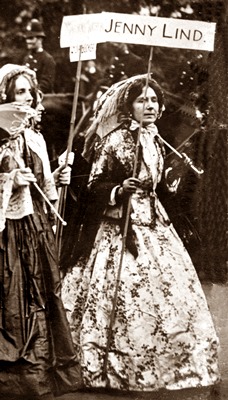
IMAGE: Possibly Jenny
Lind's daughter ( Mrs. Raymond Maude) in the Suffragette Coronation Procession London, 1911.
(She did march in the NUWSS Suffrage Procession on 13 June 1908.)
|
|
|

